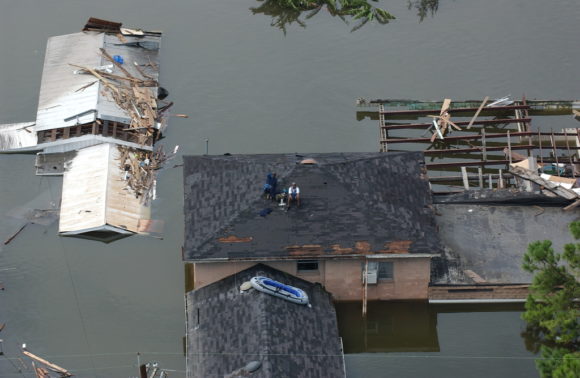As the Atlantic hurricane season gets underway, a new report analyzing 100 of the largest U.S. cities shows where homeowners face the greatest financial risk and exposure to flooding.
According to the personal financial website ValuePenguin.com’s analysis, there are only four active flood insurance policies for every 10 houses located in high-risk flood zones, or what FEMA designates as 100-year floodplains. Most of these policies are concentrated in regions such as Florida and Louisiana, where homeowners have learned the hard way about flood risks.
There are seven cities where only two out of 10 houses located in high-risk flood zones are covered by flood insurance. These cities are Boise, Idaho; Riverside, California; Detroit; St. Louis; Cleveland; Minneapolis and Youngstown, Ohio.
Not surprisingly, the lowest rates of active flood insurance tend to be in cities and states that haven’t experienced catastrophic flood damage in a long time, according to the report.
ValuePenguin.com says that changing flood maps from the Federal Emergency Management Agency (FEMA) contribute to why so many homeowners in high risk flood zones don’t have flood insurance.
“Climate change and more accurate mapping techniques are placing more homes in the 100-year floodplain. There may be a lag between homes getting hit with the high-risk designation and getting notice that they now need flood insurance. Additionally, lenders and homeowners can appeal the flood zone designation of a property to avoid the expenses associated with flood insurance,” the report says.
Homeowners in 100-year floodplains may not realize that their homes have a 26% chance of being flooded over the duration of a 30-year mortgage. FEMA maps out areas at high risk of flooding through the use of the 100-year floodplain — also referred to as special flood hazard areas (SFHAs), which have a 1% chance of flooding in any given year.
“While that may not sound like a high level of risk, it becomes substantial when multiplied over several decades,” according to the report.
The ValuePenguin report considers flood policies from the government’s National Flood Insurance Program only; it does not include policies from private insurance companies.
Private Flood
A 2019 report on the private flood insurance market by Wells Media’s Research & Trends division found private flood insurers reported total direct premiums written of $681 million in 2018, an increase of $51 million over 2017. The majority of the growth was in commercial flood insurance, according to the report that ranks the top private flood insurers.
According to the Wells Media report, of all private flood insurance written across the country, about 30% is written in seven Gulf and Atlantic coast states identified by CoreLogic as having the highest potential for storm surge damage — Florida, Louisiana, Texas, Virginia, South Carolina, North Carolina and Georgia.
Between 2016 and 2017, the private flood marketplace for these southern states expanded by nearly $80 million in direct premiums written. Growth slowed considerably in 2018, with an increase of just under $9 million. In most of these states, the number of single-family homes identified as high risk far exceeds the number of flood policies written in the states by the NFIP.
Analysts at ValuePenguin.com, which is part of LendingTree, used data from the National Flood Insurance Program and the New York University’s Furman Center, to identify the relationship between the number of active flood insurance policies and the number of owner-occupied housing units located in the 100-year floodplain.
Topics Flood Homeowners
Was this article valuable?
Here are more articles you may enjoy.



 Nearly Half of 100 Largest P/C Insurers Destroy Value: ACORD
Nearly Half of 100 Largest P/C Insurers Destroy Value: ACORD  Relief But Questions on Agents’ Duties to Insureds After Florida Court Ruling
Relief But Questions on Agents’ Duties to Insureds After Florida Court Ruling  Kansas Man Sentenced to Probation for Insurance Fraud
Kansas Man Sentenced to Probation for Insurance Fraud  Disney Worker Injured Trying to Stop Runaway Boulder at Indiana Jones Show
Disney Worker Injured Trying to Stop Runaway Boulder at Indiana Jones Show 


